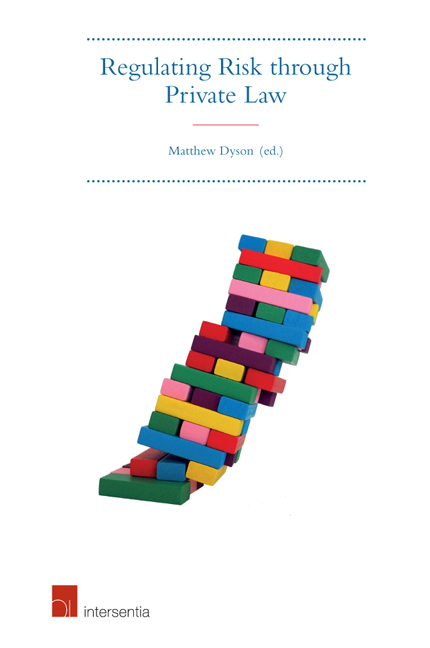Chapter 1 - Introduction
Published online by Cambridge University Press: 13 October 2018
Summary
This book seeks to build towards an overarching conception of risk in legal theory, particularly of the linked role of risk-taking in generating liability and in liability regulating risk. Its purpose is to show what analysing and regulating in terms of risk adds to our understanding of legal phenomena.
Sometimes risk-taking is a specific wrong in private law; sometimes it is wrongful only when harm results and in other situations it is only wrongful when some further requirement to harm, like fault, exists. On occasion, it has even been said that risk is a distinct harm itself or that causation can be satisfi ed by an increase in risk. There are some roles for risk-reasoning expressed through defences, or which trigger particular remedies, such as injunctions. Similarly, the objectives and methods of the law in seeking to shape risk are varied and under-researched: legislation, judge-made law, professional standards and guiding principles all play roles of varying kinds in the patchwork of regulation. This diversity, both within legal systems and across systems, inhibits a real understanding of risk and the role law can play in regulating it.
The core purpose of the book is to show what benefit legal systems derive from deploying risk-reasoning. This involves understanding how ‘risk’ is used in different legal traditions and then assessing what benefit that use provides. Risk-reasoning could be used on at least three levels: first, a theoretical level (the conception of risk itself); second, on a liability-defining level (risk-taking generating liability, primarily for wrongs but including liability for non-wrongs); and third, from an instrumental angle (private law 's efforts to regulate risktaking). We therefore move from ‘risk’ as a conception, to discuss ‘risk-taking’ as a component of liability and as an activity to be regulated. A second-order aspect of the study is the role of legal actors in making decisions about risk, including the role of the state and insurers in legal phenomena.
Taking tort law as a case study, the book analyses national variation in risk understanding, liability, culture and regulation, and from that develops a legal framework for understanding and responding to risk. Then, looking beyond tort, the book examines the contextual and cultural setting of different risks and how to regulate them, across legal systems.
- Type
- Chapter
- Information
- Regulating Risk through Private Law , pp. 1 - 20Publisher: IntersentiaPrint publication year: 2018

